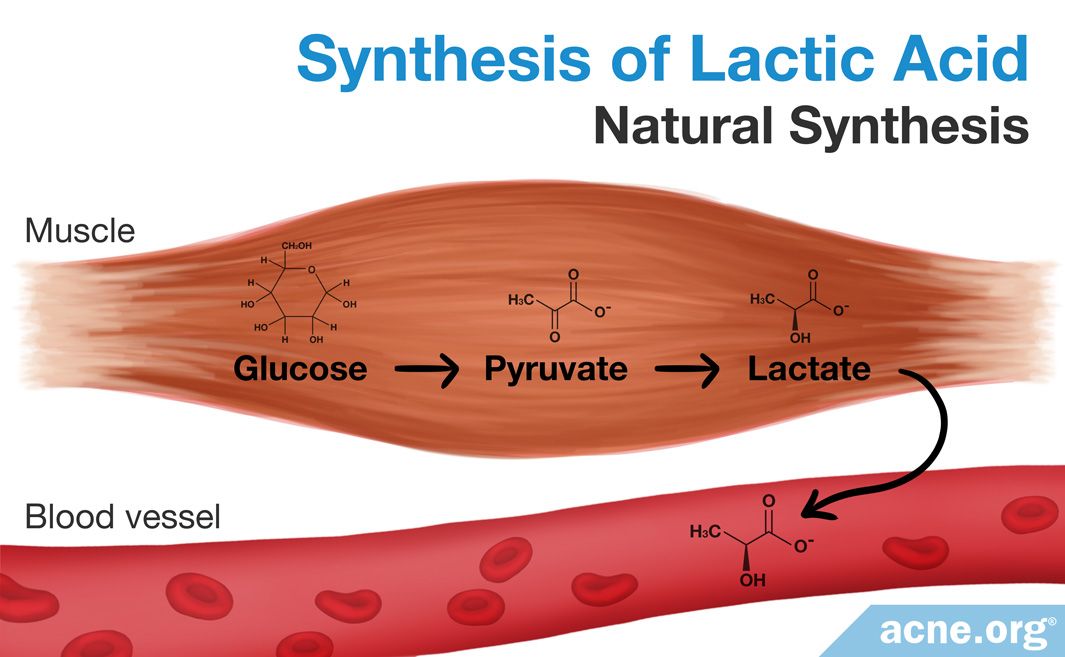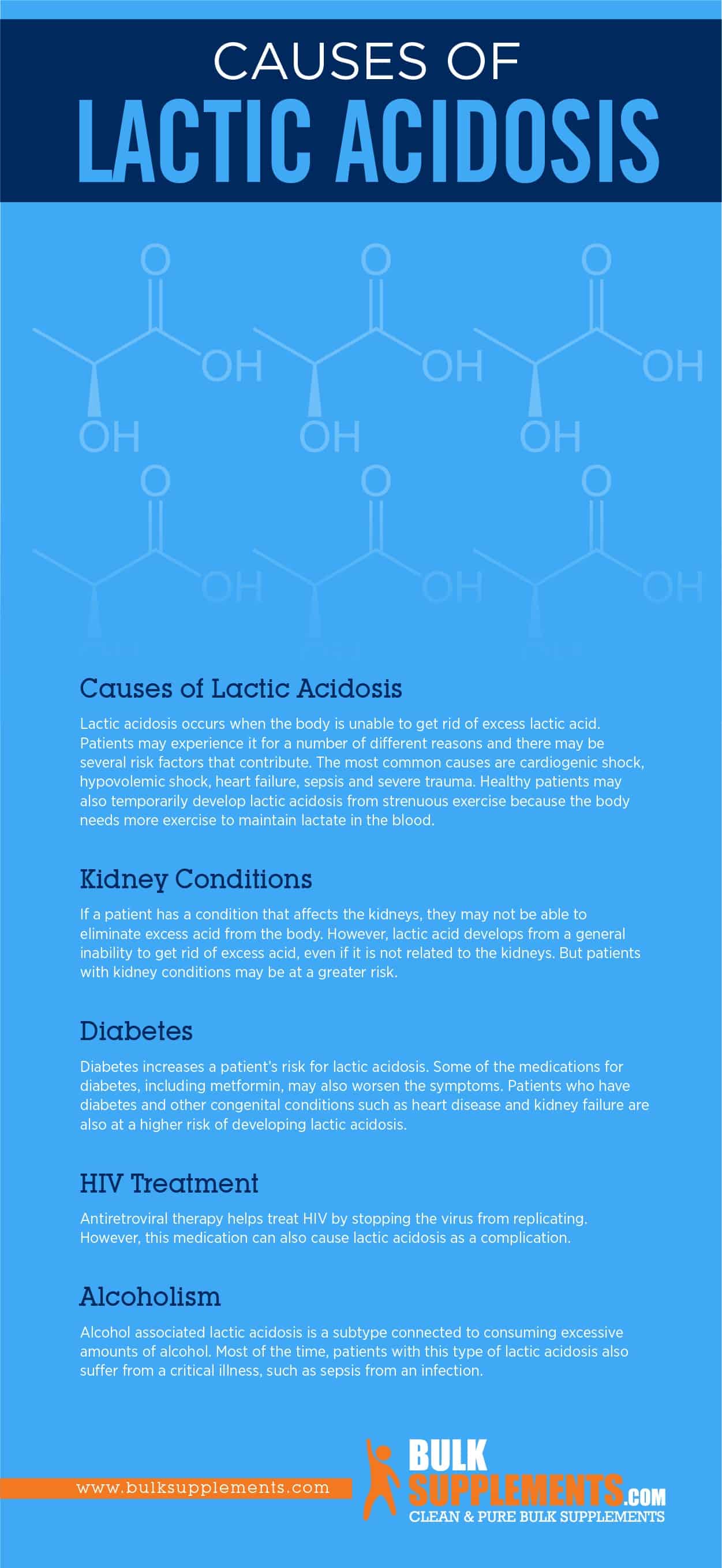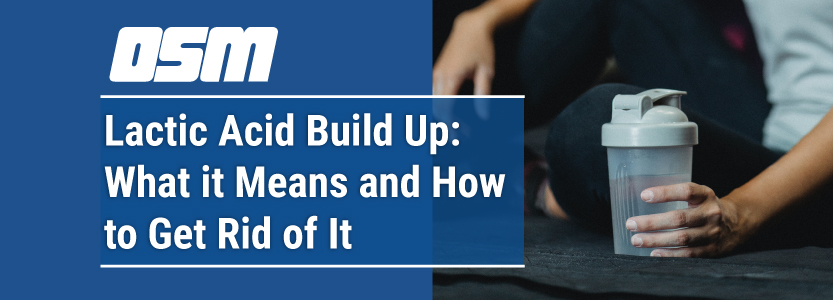Dietary Changes to Combat Lactic Acid
Certain dietary modifications can contribute significantly to reducing lactic acid buildup in the body. Incorporating specific foods and nutrients into your meals can help optimize muscle function and recovery.
First, consider complex carbohydrates as a primary energy source. Consuming whole grains, legumes, and starchy vegetables can provide a steady supply of energy during exercise, potentially minimizing lactic acid production. These slow-release carbohydrates are digested and absorbed gradually, preventing rapid spikes in blood sugar and insulin levels.
Lean proteins, such as chicken, turkey, fish, and tofu, are essential for muscle repair and recovery. Consuming adequate protein after exercise can help reduce muscle damage and soreness, which may be associated with lactic acid buildup. Aim for 20-30 grams of protein within 30-60 minutes post-exercise to support optimal muscle recovery.
Antioxidant-rich fruits and vegetables, like berries, citrus fruits, and leafy greens, can help combat oxidative stress caused by intense exercise. Antioxidants, such as vitamins C and E, can neutralize free radicals and reduce inflammation, promoting overall muscle health and recovery. Incorporating a variety of colorful produce in your diet can ensure you receive a broad spectrum of these beneficial compounds.
Additionally, certain nutrients and supplements may aid in lactic acid reduction. For instance, magnesium plays a crucial role in energy production and muscle function. A deficiency in magnesium can exacerbate lactic acid buildup, so consider incorporating magnesium-rich foods like nuts, seeds, and leafy greens into your diet. Moreover, some research suggests that supplementing with vitamin B6, vitamin B12, and omega-3 fatty acids may help reduce lactic acid levels and improve exercise performance.
In conclusion, adopting a balanced diet rich in complex carbohydrates, lean proteins, and antioxidant-rich fruits and vegetables can contribute significantly to reducing lactic acid buildup and promoting overall muscle health. Additionally, incorporating specific nutrients and supplements may further support lactic acid management and exercise recovery.
Hydration for Lactic Acid Management
Proper hydration plays a critical role in managing lactic acid buildup and overall muscle health. Adequate water intake helps facilitate the removal of lactic acid from the muscles, promoting faster recovery and reduced soreness.
During exercise, your body produces lactic acid as a byproduct of anaerobic metabolism. When oxygen levels are insufficient to meet energy demands, your muscles rely on this alternative energy pathway to continue functioning. However, this process also leads to lactic acid accumulation, which can contribute to muscle fatigue and soreness.
Staying hydrated helps dilute lactic acid in the bloodstream, allowing your body to eliminate it more efficiently. Moreover, proper hydration supports the optimal functioning of your cardiovascular and respiratory systems, enhancing your body’s ability to deliver oxygen to working muscles. This, in turn, reduces the reliance on anaerobic metabolism and lactic acid production.
To maintain proper hydration, aim to consume at least 8-10 cups of water daily, increasing your intake on days when you exercise. Additionally, consider incorporating hydrating foods, such as fruits and vegetables, into your diet. These water-rich foods can help maintain your fluid balance and provide essential electrolytes, which are crucial for muscle function and nerve transmission.
Furthermore, monitoring your hydration levels can help you tailor your fluid intake to your individual needs. Check your urine color throughout the day, aiming for a pale yellow hue. Darker urine may indicate dehydration, while clear urine could suggest overhydration. Both scenarios can negatively impact your exercise performance and lactic acid management.
In conclusion, proper hydration is vital for managing lactic acid buildup and promoting overall muscle health. By staying hydrated and monitoring your fluid intake, you can support your body’s natural lactic acid removal process and enhance your exercise recovery.
Stretching and Foam Rolling Techniques
Implementing stretching and foam rolling techniques can help alleviate muscle soreness and reduce lactic acid buildup, promoting faster recovery and improved exercise performance.
Stretching helps increase your muscles’ flexibility and range of motion, which can aid in the removal of lactic acid. Dynamic stretches, such as leg swings, lunges with twists, and arm circles, are particularly effective in preparing your muscles for exercise and enhancing blood flow. Post-exercise static stretches, where you hold a stretch for 20-30 seconds, can help relax your muscles and promote recovery.
Foam rolling, also known as self-myofascial release, is a technique that involves using a foam roller to apply pressure to tight muscles and trigger points. This process can help break up adhesions and scar tissue, improve circulation, and promote the release of lactic acid. Common foam rolling exercises include rolling the IT band, quadriceps, hamstrings, and glutes. Aim to spend 1-2 minutes on each muscle group, focusing on areas of tension or discomfort.
To maximize the benefits of stretching and foam rolling, consider the following guidelines:
-
Perform dynamic stretches before exercise to prepare your muscles and enhance blood flow.
-
Implement static stretches after exercise to relax your muscles and support recovery.
-
Foam roll before or after exercise, focusing on areas of tension or discomfort.
-
Listen to your body and avoid applying too much pressure, which could exacerbate muscle soreness or injury.
In conclusion, incorporating stretching and foam rolling techniques into your exercise routine can help alleviate muscle soreness and reduce lactic acid buildup, promoting faster recovery and improved exercise performance. By following the guidelines outlined above, you can optimize the benefits of these methods and support your body’s natural lactic acid removal process.
Gentle Exercise for Lactic Acid Recovery
Incorporating light exercise into your post-workout routine can help promote blood flow, aid in the removal of lactic acid, and support overall muscle recovery.
Light exercises, such as walking, jogging at a slow pace, or practicing gentle yoga poses, can help stimulate circulation and facilitate the removal of lactic acid from your muscles. This increased blood flow can also deliver essential nutrients and oxygen to your muscles, supporting their repair and growth.
Walking is a low-impact activity that can help reduce lactic acid buildup while promoting relaxation and stress relief. Aim for a brisk walk of 15-30 minutes at a comfortable pace, allowing your body to cool down and recover from your more intense workout.
Gentle yoga poses can also be beneficial for lactic acid recovery. Poses such as downward-facing dog, child’s pose, and legs-up-the-wall can help stretch and relax your muscles while increasing blood flow. Spend 1-2 minutes in each pose, focusing on deep, controlled breathing to further enhance relaxation and recovery.
To maximize the benefits of gentle exercise for lactic acid recovery, consider the following guidelines:
-
Choose low-impact activities that are gentle on your muscles and joints.
-
Maintain a comfortable pace and avoid pushing yourself too hard, as this could exacerbate muscle soreness and delay recovery.
-
Focus on deep, controlled breathing to promote relaxation and stress relief.
-
Listen to your body and adjust your routine as needed, taking rest days when necessary.
In conclusion, incorporating gentle exercise into your post-workout routine can help promote blood flow, aid in the removal of lactic acid, and support overall muscle recovery. By following the guidelines outlined above, you can optimize the benefits of these light exercises and enhance your body’s natural lactic acid removal process.
The Role of Deep Breathing and Relaxation Techniques
Deep breathing and relaxation techniques can help reduce lactic acid buildup by promoting blood flow, enhancing oxygen delivery to your muscles, and activating the parasympathetic nervous system, which supports rest and recovery.
Diaphragmatic breathing, also known as belly breathing, is an effective technique for promoting relaxation and reducing lactic acid buildup. To practice diaphragmatic breathing, follow these steps:
-
Lie down or sit in a comfortable position, keeping your spine straight.
-
Place one hand on your chest and the other on your belly, just below your ribcage.
-
Inhale deeply through your nose, allowing your belly to rise as you fill your lungs with air.
-
Exhale slowly through your mouth or nose, feeling your belly contract as you release the air.
Aim to perform 5-10 minutes of diaphragmatic breathing daily, focusing on slow, controlled breaths. This practice can help activate your parasympathetic nervous system, promoting relaxation and reducing stress hormone levels, which can contribute to lactic acid buildup.
Progressive muscle relaxation is another technique that can help alleviate muscle tension and reduce lactic acid buildup. This method involves tensing and then releasing various muscle groups in a systematic manner, starting from your toes and working your way up to your head. By focusing on the sensations of tension and release, you can become more aware of your body and promote relaxation.
To maximize the benefits of deep breathing and relaxation techniques, consider the following guidelines:
-
Find a quiet, comfortable space where you can practice without interruption.
-
Begin with shorter sessions and gradually increase the duration as you become more comfortable with the techniques.
-
Combine deep breathing and relaxation techniques with other stress management strategies, such as meditation, mindfulness, or visualization, to further enhance their effectiveness.
In conclusion, deep breathing and relaxation techniques can help reduce lactic acid buildup by promoting blood flow, enhancing oxygen delivery to your muscles, and activating the parasympathetic nervous system. By incorporating these practices into your daily routine, you can support your body’s natural lactic acid removal process and enhance your overall exercise recovery.
Monitoring Your Progress and Adjusting Your Routine
Monitoring your lactic acid levels and exercise intensity is crucial for optimizing your lactic acid management strategy and achieving long-term results. By tracking your progress, you can identify trends, adjust your routine, and ensure that your efforts are effective in reducing lactic acid buildup.
Lactic acid testing can be performed using a variety of methods, including blood lactate tests, which measure the amount of lactic acid in your bloodstream during or after exercise, and wearable devices that estimate lactic acid levels based on heart rate or other physiological indicators. Consult with a fitness professional or sports medicine expert to determine the most appropriate testing method for your needs and goals.
Once you have a clear understanding of your lactic acid levels and exercise intensity, you can begin to adjust your routine accordingly. For example, if you find that high-intensity interval training (HIIT) workouts result in excessive lactic acid buildup, consider incorporating lower-intensity steady-state cardio exercises, such as jogging or swimming, into your routine. Alternatively, if you notice that your lactic acid levels remain relatively low during strength training sessions, you may want to increase the intensity or volume of your weightlifting exercises to further challenge your muscles and promote growth.
Additionally, consider tracking other factors that can influence lactic acid buildup, such as your sleep patterns, stress levels, and nutrition. By maintaining a balanced diet, getting adequate rest, and managing stress, you can support your body’s natural lactic acid removal process and enhance your overall exercise recovery.
To maximize the benefits of monitoring your progress and adjusting your routine, consider the following guidelines:
-
Establish clear goals and objectives for your lactic acid management strategy.
-
Choose a testing method that is accurate, reliable, and convenient for your needs.
-
Regularly review your lactic acid levels and exercise intensity, making adjustments as needed to optimize your routine.
-
Consult with a fitness professional or sports medicine expert for guidance and support in implementing your lactic acid management strategy.
In conclusion, monitoring your lactic acid levels and exercise intensity is essential for optimizing your lactic acid management strategy and achieving long-term results. By tracking your progress and adjusting your routine accordingly, you can reduce lactic acid buildup, enhance your exercise recovery, and improve your overall fitness and performance.
Long-Term Strategies for Lactic Acid Reduction
Implementing long-term strategies for reducing lactic acid buildup can lead to significant improvements in exercise performance, muscle health, and overall well-being. By focusing on consistency and patience, you can achieve lasting results and optimize your body’s natural lactic acid removal process.
Regular exercise is essential for maintaining healthy lactic acid levels. As your muscles become stronger and more efficient, they will be better able to process and remove lactic acid during and after exercise. Aim for a well-rounded exercise routine that includes a mix of cardio, strength training, and flexibility exercises. This will not only help reduce lactic acid buildup but also promote overall fitness and health.
A balanced diet plays a crucial role in lactic acid management. Consuming complex carbohydrates, lean proteins, and antioxidant-rich fruits and vegetables can help support your body’s natural lactic acid removal process and enhance exercise recovery. Additionally, consider incorporating foods that are high in B vitamins, magnesium, and potassium, as these nutrients have been shown to help reduce lactic acid buildup and improve exercise performance.
Stress management techniques, such as meditation, mindfulness, and yoga, can also help reduce lactic acid buildup by promoting relaxation and reducing stress hormone levels. By incorporating these practices into your daily routine, you can support your body’s natural lactic acid removal process and enhance your overall exercise recovery.
To maximize the benefits of long-term strategies for lactic acid reduction, consider the following guidelines:
-
Establish a consistent exercise routine that includes a mix of cardio, strength training, and flexibility exercises.
-
Maintain a balanced diet that is high in complex carbohydrates, lean proteins, and antioxidant-rich fruits and vegetables.
-
Incorporate stress management techniques, such as meditation, mindfulness, or yoga, into your daily routine.
-
Monitor your lactic acid levels and exercise intensity, making adjustments as needed to optimize your lactic acid management strategy.
-
Be patient and consistent in your efforts, understanding that lasting results take time and dedication.
In conclusion, implementing long-term strategies for reducing lactic acid buildup can lead to significant improvements in exercise performance, muscle health, and overall well-being. By focusing on consistency and patience, you can achieve lasting results and optimize your body’s natural lactic acid removal process.
When to Consult a Medical Professional
While natural ways to reduce lactic acid buildup can be effective for many individuals, there are certain situations where consulting a medical professional is appropriate. If you experience severe or persistent muscle pain, cramping, or weakness, or if you have a known underlying health condition, it is essential to seek professional advice.
Lactic acid buildup can be a symptom of various medical conditions, including metabolic disorders, mitochondrial diseases, and infections. In some cases, high lactic acid levels can indicate a serious underlying condition, such as sepsis or diabetic ketoacidosis. If you experience any of the following symptoms, seek medical attention immediately:
-
Shortness of breath or difficulty breathing
-
Chest pain or pressure
-
Rapid heart rate or palpitations
-
Confusion or disorientation
-
Excessive thirst or urination
-
Nausea or vomiting
In addition to underlying health conditions, certain medications and supplements can affect lactic acid metabolism. If you are taking any prescription medications or over-the-counter supplements, it is essential to discuss their potential impact on lactic acid buildup with your healthcare provider.
Finally, if you are an athlete or fitness enthusiast, it is essential to work with a sports medicine professional or fitness expert to develop a comprehensive lactic acid management strategy. These professionals can provide guidance on exercise intensity, nutrition, hydration, and recovery techniques, as well as monitor your lactic acid levels and adjust your routine as needed to optimize your performance and reduce the risk of injury.
In conclusion, while natural ways to reduce lactic acid buildup can be effective, it is essential to consult a medical professional if you experience severe or persistent symptoms, have a known underlying health condition, or are taking medications or supplements that may affect lactic acid metabolism. By working with a healthcare provider, you can ensure that your lactic acid management strategy is safe, effective, and tailored to your individual needs and goals.









